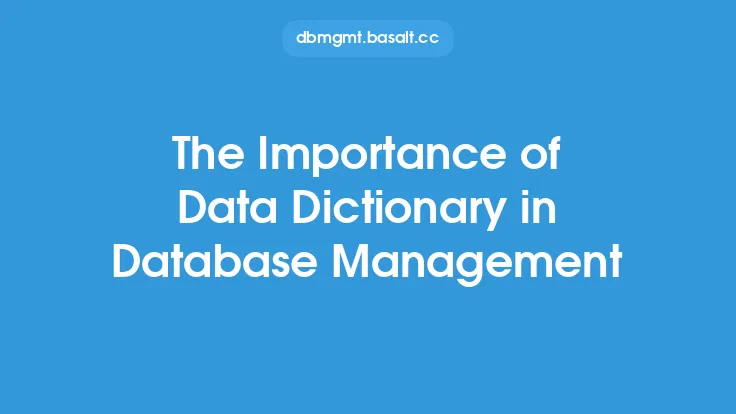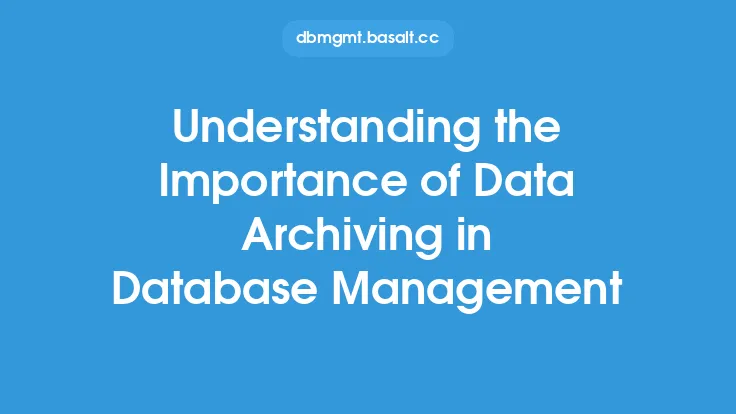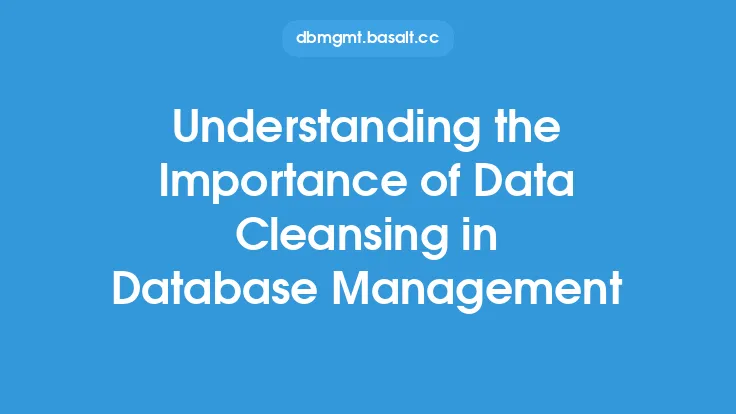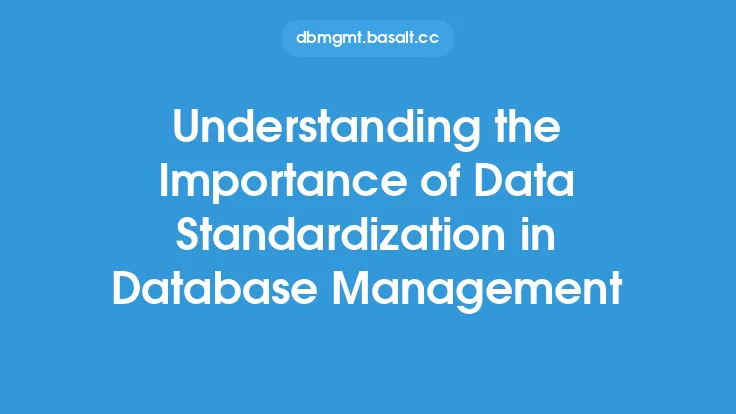Data aggregation is a crucial process in database management that involves collecting and combining data from multiple sources into a single, unified view. This process enables organizations to gain a deeper understanding of their data, identify trends and patterns, and make informed decisions. In the context of data normalization, data aggregation plays a vital role in transforming raw data into meaningful information that can be used to drive business outcomes.
What is Data Aggregation?
Data aggregation is the process of gathering and combining data from various sources, such as databases, files, and applications, into a single, centralized repository. This process involves extracting data from multiple sources, transforming it into a standardized format, and loading it into a target system, such as a data warehouse or a database. The aggregated data is then used to generate reports, analyze trends, and create visualizations that help organizations understand their business performance and make data-driven decisions.
Benefits of Data Aggregation
Data aggregation offers several benefits to organizations, including improved data quality, increased efficiency, and enhanced decision-making capabilities. By aggregating data from multiple sources, organizations can eliminate data silos and gain a unified view of their business operations. This enables them to identify areas of improvement, optimize processes, and make informed decisions that drive business growth. Additionally, data aggregation helps organizations to reduce data redundancy, improve data consistency, and enhance data security.
Types of Data Aggregation
There are several types of data aggregation, including rollup, drill-down, and grouping sets. Rollup aggregation involves combining data from multiple sources into a single, summarized view, while drill-down aggregation enables users to view detailed data by drilling down into specific categories or dimensions. Grouping sets aggregation involves grouping data into sets based on specific criteria, such as customer demographics or sales regions. Each type of data aggregation serves a specific purpose and helps organizations to analyze and understand their data from different perspectives.
Data Aggregation Techniques
Data aggregation techniques involve using various methods to combine and analyze data from multiple sources. These techniques include using aggregate functions, such as SUM, AVG, and COUNT, to calculate summarized values, and using data grouping and filtering techniques to categorize and analyze data. Additionally, data aggregation techniques involve using data visualization tools, such as charts and graphs, to represent aggregated data in a meaningful and intuitive way. By using these techniques, organizations can gain a deeper understanding of their data and make informed decisions that drive business outcomes.
Data Aggregation Tools and Technologies
There are several data aggregation tools and technologies available, including data warehousing platforms, business intelligence tools, and data integration software. These tools and technologies enable organizations to aggregate data from multiple sources, transform it into a standardized format, and load it into a target system. Additionally, they provide advanced analytics and data visualization capabilities that enable organizations to analyze and understand their aggregated data. Some popular data aggregation tools and technologies include relational databases, NoSQL databases, and cloud-based data integration platforms.
Challenges and Limitations of Data Aggregation
Data aggregation poses several challenges and limitations, including data quality issues, data security concerns, and scalability limitations. Data quality issues arise when data is incomplete, inaccurate, or inconsistent, which can lead to incorrect or misleading aggregated data. Data security concerns arise when sensitive data is aggregated and stored in a centralized repository, which can increase the risk of data breaches and cyber attacks. Scalability limitations arise when large volumes of data are aggregated, which can lead to performance issues and data processing delays. To overcome these challenges and limitations, organizations must implement robust data governance policies, ensure data security and integrity, and use scalable data aggregation tools and technologies.
Best Practices for Data Aggregation
To ensure effective data aggregation, organizations must follow best practices, such as defining clear data aggregation goals and objectives, establishing data governance policies, and using standardized data formats and protocols. Additionally, organizations must ensure data quality and integrity, use secure data transmission and storage protocols, and implement scalable data aggregation tools and technologies. By following these best practices, organizations can ensure that their data aggregation processes are efficient, effective, and secure, and that their aggregated data is accurate, reliable, and meaningful.
Conclusion
In conclusion, data aggregation is a critical process in database management that enables organizations to gain a deeper understanding of their data, identify trends and patterns, and make informed decisions. By aggregating data from multiple sources, organizations can eliminate data silos, improve data quality, and enhance decision-making capabilities. While data aggregation poses several challenges and limitations, organizations can overcome these by implementing robust data governance policies, ensuring data security and integrity, and using scalable data aggregation tools and technologies. By following best practices and using effective data aggregation techniques, organizations can unlock the full potential of their data and drive business growth and success.





